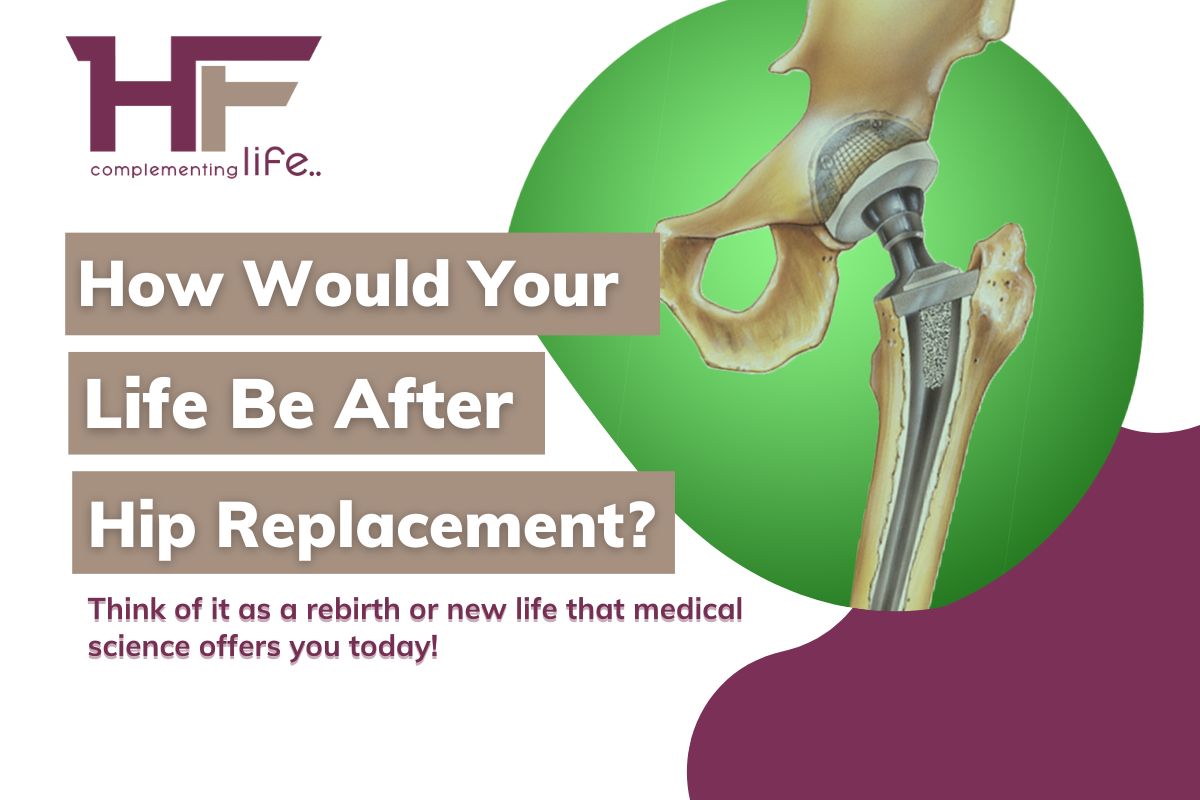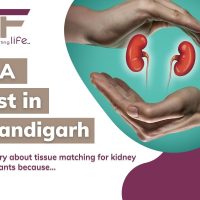Did your doctor propose a hip replacement surgery to address your chronic and persistent hip pain appearing due to some hip bone anomalies?
Get ready!
Your life before and after the hip replacement surgery is likely to see a transformation, as with every major operation, for that matter!
Undoubtedly, there lay post-surgical restrictions that you must follow lifelong, and failing to abide by those can lead to complications. And, then, you would repent for not being aware of what hip replacement surgery is, what happens during a hip replacement, what to expect after hip replacement, what can you never do after hip replacement, and so forth!
So, why not have a brief idea about the major operation that you will be undertaking and what follows?
CContents
What Is Hip Replacement? What Are The Two Types Of Hip Replacement?
Also called in medical terms, Hip Arthroplasty, hip replacement surgery involves replacing parts of your hip joints or the whole with artificial metallic implants or made with hard plastic! It can help reduce your hip pain and ensure improved functions.
Now, you must be wondering where you feel pain if you need a hip replacement.
Well,
The pain typically occurs in your groin and the back of your buttock region, but it may occur anywhere between your groin and the knee, such as the front of your thigh or knee joints. That’s what is known as hip pain altogether!
Doctors pursue hip replacement as a treatment option when –
- Non-surgical methods are not effective enough to topple the hip pain interfering with your daily activities for a long,
- Your hip pain worsens with walking, even when using a support like a walker or cane,
- You struggle to rise from a seated position and face difficulties climbing up or down the stairs.
- There’s swelling or tenderness near your hip.
There are two different modalities in this surgical process. The first one is, what we call, anterior hip replacement surgery, and the second is called posterior hip replacement surgery.
If you can’t understand the names, I will help you get the differences!
The main difference lies in nothing but the area of the incision, or in other words, the body parts that the doctor cuts through. While an anterior hip replacement entails making an incision at the front of your hip, invading right from the top of your pelvic bone, a posterior hip replacement indulges in cutting through the back or side of your hip!
Medical experts note that the latter is better than the former; because it renders a far more detailed view of your hip joints while performing the surgery. Thus, anterior hip replacement surgery holds a higher risk of developing fractures.
On the other hand, a posterior hip replacement may cause muscle damage while it cuts through it to gain access to the hip. Whereas, in the case of the anterior one, the small cosmetic incisions are less likely to damage any muscle tissue.
Your doctors shall decide the modality depending on various factors. So, make sure you discuss this with them in detail.
Why Do Doctors Perform A Hip Replacement?
Doctors tend to conduct a hip replacement to treat the following health conditions.
Osteoarthritis
Indeed, this is the most common reason for doctors to pursue hip replacement surgery!
Osteoarthritis is also known as wear-and-tear arthritis, a degenerative disease that constitutes the wearing down or damage of flexible tissues (cartilage) at the end of your bones. Such an abnormality may arise in the hands, knees, and hips.
You may have osteoarthritis from overusing repetitive joint movements. During this condition, you experience severe pain and stiffness in your joints, herein, hip joints, and can feel your joints appearing slightly larger.
Rheumatoid Arthritis
An inflammatory, auto-immune disease, rheumatoid arthritis, is another reason why doctors perform hip replacement surgery.
This condition typically occurs in your joints when your immune system attacks healthy cells in your body, causing inflammation that erodes the cartilage covering the end of your bones. As a result, joint deformities take the stage.
Although the root cause for your immune system to react abnormally is unknown to medical science, genes, sex, age, body weight, hormonal imbalance, and gut microbiome infection history are some catalysts. If you have this disease, it’s plausible that you have swelling in your joint, accompanied by pain, stiffness, unintended weight loss, fatigue, and fever.
Osteonecrosis
Your doctor may undertake the hip replacement approach to treat a more serious condition like Osteonecrosis, where parts of your bone tissue die out due to the lack of blood supply.
It typically happens near the ball portion of your hip joints. Herein, the bone gradually collapses and gets deformed. Such an anomaly may occur due to a fracture, bone dislocation, long-term steroid use, alcoholism, clotting disorders, radiation therapy or other cancer treatments, sickle cell disease, and more.
Are you aware of where do you feel pain if you need a hip replacement due to osteonecrosis? It’s in the buttock or groin area, whether at motion or rest. During this condition, you tend to have limited movements and suffer from muscle spasms.
What Happens During A Hip Replacement Surgery?
While the goal of relieving you from pain, stimulating your joint functioning, and improving your mobility, a team of orthopedic surgery comes to the rescue, performing a hip replacement surgery.
The surgery takes place in a hospital or clinic.
Once you check in for the surgery, the healthcare providers give you a gown to wear for the operation theatre (OT).
Next, they shall ask you to enter the OT and inject local or general anesthesia dosage into your veins. While local anesthesia makes your lower body numb, a general one puts you in a subconscious or sleep-like state.
Now, the surgeons cut open through your groin, buttock, or side area of your hip and remove the damaged or diseased part from the hip joint. Furthermore, they replace the acetabulum (or socket) and the femur head with artificial pieces.
Your surgeons may opt for various combinations, like –
1. A ceramic ball with plastic socket lining,
2. A metal ball with plastic socket lining,
3. A ceramic ball with ceramic socket lining,
4. A metallic ball with ceramic socket lining, and so forth!
However, it is less likely for them to choose a metal-on-metal bearing. This is to avoid further health complications.
The entire process takes about two hours to complete, and after the surgery, the healthcare providers shall shift you to the recovery room. It is where you spend a few days, precisely three to five, under medical attention and observation.
From this very time begins your do’s and don’t list to follow! It is mostly because hip replacement surgery is associated with certain risks and setbacks. Your job is to avoid these risks by not ignoring your recovery process and instead up-taking lifetime precautions.
What To Expect After A Hip Replacement Surgery?
After hip replacement surgery, some swelling in your hip joint and post-operative pain are normal. The healthcare providers ask you to lay flat on your back and let the wounds heal. They may provide you with a pillow between your legs. So you can keep your hip in the appropriate position.
You can walk from the next day of your hip replacement surgery. But please do so in the presence of a caregiver to avoid any mishap. It is because initially, you math find it uncomfortable to walk.
You may need toilet equipment for the initial recovery period after your hip replacement and may not be allowed to use a regular washroom. No wonder you need to keep your wounds away from water and wipe out their associated risks!
Although physical rehabilitation programs start on the very same day or the next of your surgery, you must remain on complete bed rest for about three to five days until you get discharged from the healthcare center. The number of days you have to stay here depends on what type of hip replacement surgery you have and what’s your health progress status.
Meanwhile, the healthcare providers shall routinely check your blood pressure, pulse rate, and overall condition, change the dressing around your wounds, and give oral or intravenous medications.
Once you go home, you must follow whatever lay prescribed and stay in touch with your doctor. It’s better to have a nurse to look after you, at least for the first two months after hip replacement. This can make your daily activities easier while you can have a proper, faster recovery.
During this phase, you should wear loose clothes and select comfortable fabrics like cotton. Yes. You need attire that shall not stick to your skin and cause friction because it may deteriorate your wounds.
Light exercises like walking, standing, or sitting can help you speed up your recovery after hip replacement. How so?
Exercise boosts blood circulation and helps deliver enough oxygen to your organs and tissues. As a result, your internal wound is likely to heal faster. Ask your doctor about the type of workout you can pursue after your hip replacement surgery.
You also need to pay attention to your diet during this time to avoid bloating, indigestion, and excess weight. Gaining weight during this period shall put immense stress on your new hip prosthesis, increasing the risk of wear and tear and associated health complications.
Risks Associated With Hip Replacement Surgery!
People often end up counting risks and health complications related to this treatment as – what I wish I knew before hip replacement surgery. Why not? There lay around seven different post-surgical complications of hip replacement, and they are as follows.
Formation of Blood Clots
A hip replacement surgery may lead to the formation of blood clots in the veins of your leg. It can, in turn, pose a threat to your life by breaking off and traveling straightaway to your lungs, heart, or brain (though rare).
Therefore, after your hip replacement, your doctor may give blood-thinner medication to prevent such a complication.
Nerve Injury or Damage
Even though nerve injury or damage is rare following a hip replacement surgery, you cannot let go of the whole possibility. Sometimes, the installation of implants in your hip, or compression and stretching due to these, can hurt or damage nearby nerves, like the sciatic and femoral nerves, causing numbness and pain.
Doctors recommend physical therapies, neuropathic medicines, and extended bracing to combat such a condition.
Infections
Since artificial implants lack the ability to receive blood flow, our immune system fails to identify and stop bacterial growth from occurring near your hip joint implant. When bacterial growth increases, it may make the incision site or even deeper tissues vulnerable to infections.
Doctors provide antibiotics to limit infectious growth, but if it occurs near your new hip joint, you may require another surgery to replace the artificial joint.
Fracture
A hip replacement surgery may cause a fracture to the healthy part of your hip joint. It happens in about 20% of the cases. The femur bone near the implant breaks, causing severe pain and disability to bear weight.
However, most often, the fractures are small in size. Hence, they can heal on their own!
Dislocation
After a hip replacement surgery, there’s always a possibility for the ball of the new joint to get dislocated or move out of the socket. Such a risk remains for about three months after your surgery and arises from soft tissue destruction.
Please note that an external rotation of your extended hip joint or abduction can contribute to this dislocation. So can abduction of your extended leg and excessive inclined (or steep cup) positioning!
Doctors usually suggest bracing to correct the dislocation. But if the hip dislocation continues, another surgery may stand requisite to stabilize your hip.
Change in The Length of Your Leg
Despite special care during hip replacement surgery, patients experience changes in the leg length in the post-surgical period. Yes. Your new hip may make one leg longer or shorter than another.
It may happen due to the contracture of muscles surrounding your hip, and stretching hip muscles may help fix it at times!
Loosening of The Artificial Implants
Above all, after many years of hip replacement surgery, the artificial implant in your body may get loose due to wear and tear in the implant surface, thereby demanding another surgery. It is, however, rare for newer implants and only happens when the implants lack a solid fix.
Trust me, high-impact activities and excessive body weight after a hip replacement invite such a complication. So, you must become very careful about how you lead your life after this surgery.
What Are The Lifetime Precautions After Hip Replacement?
With a hip replacement, you should adopt self-care strategies to cope with your implant-bearing life.
- You have to focus on therapeutic exercises and weight management.
- You must use stools or high chairs to sit.
- You should keep the affected leg in front when you stand or sit. It means you have to keep your leg in a forward-facing position.
- You must take a backup of a chair or bed when dressing or undressing during the recovery period after your hip replacement.
- When you switch your position while in bed, you must slowly move your legs and upper body together.
- In fact, you should take small steps when you turn around while standing or walking.
- You can keep using ice or heat to reduce pain and swelling.
- You must take your medications on time and practice stress management techniques. The best way is meditation, no doubt!
But do you know what more significantly comes under the list of lifetime precautions after hip replacement?
- You cannot play high-impact sports like soccer, basketball, football, tennis, or cross-country running.
- You must not lift weight or perform heavy extortion works.
- You should not sit on the floors or any low-raised platform, be it a sofa or bed.
- You cannot squat or sit crossed-legged.
- You should not lift your knee higher than your hip.
- You must not lean forward while you sit.
- You cannot bend 90 degrees from your waist.
- You must not try to reach down when you are lying.
While many people ask how long after hip replacement can I tie my shoes, the answer to this would not be anything less than six months. Even afterward, if you want to tie your shoes, make sure you do not turn your feet too outward or inward when you bend down.
You ought to be very careful!
Key Takeaway:
So, can you make it all? If you want to recover, there’s no other option for you. As you already know what hip replacement surgery involves and what kind of complications it may bring, you must not neglect your post-operative care. Instead, you must embrace the lifetime precautions after hip replacement as that can keep you on your feet, healthy, and alive for some more days.
Think of it as a rebirth or new life that medical science offers you today!
For more information on hip replacement, stay in touch with www.healthfinder.in.











Comments